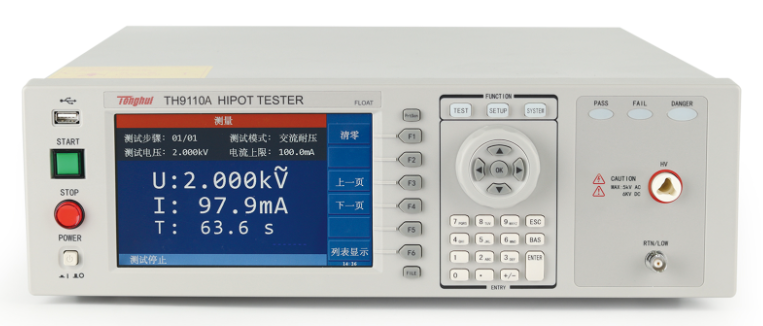Home Appliance Testing Equipment: The "Invisible Guardians" Behind Product Quality
From the coffee machine that wakes us up in the morning to the air conditioner that keeps our homes comfortable at night, home appliances have become essential to modern life. The safety, performance, and durability of these devices are not determined solely by brand reputation or design; rather, they are rigorously tested and verified by specialized equipment in laboratories. From tiny thermostats to complex heat pump systems, every function and component must pass these stringent tests before the products can reach consumers' homes.
1. Safety Testing Equipment: The First Line of Defense for Household Appliance Safety
Safety testing of household appliances is the fundamental requirement for all inspection processes, and electrical safety testers are undoubtedly the core equipment in this safety system. They can simulate various hazardous scenarios such as poor grounding, leakage, and overload. During grounding resistance testing, the device applies a 10A current to the metal casing of the appliance and measures the resistance to ground, with a requirement that the resistance be ≤4Ω, ensuring that any leakage current can be quickly discharged to ground. The withstand voltage test is even more challenging; the device applies a 2000V high voltage (for 1 minute) between the live parts and the casing. If a breakdown occurs or the current exceeds the specified value (usually ≤5mA), it is deemed to pose a safety hazard.

2. Performance Testing Equipment: Defining a Quantitative Standard for "User-Friendliness"
While the "user experience" of home appliances may seem subjective, it can be quantified through performance testing equipment. For example, with refrigerators, a temperature control performance test system uses 20 thermocouples strategically placed in the refrigerator and freezer compartments to continuously record temperature fluctuations over 72 hours under various ambient temperatures (-10°C to 40°C). A qualified refrigerator must maintain the refrigerator compartment temperature within ±1°C and the freezer compartment temperature within ±2°C, and must recover to the set temperature within 15 minutes after the door is opened for 30 seconds. For inverter-type refrigerators, the equipment also monitors the compressor's start-stop frequency, requiring no more than 6 starts/stops per hour to avoid increased noise and energy consumption due to frequent operation.
3. Life and Reliability Testing Equipment: Validating the "Durability" Time Scale
The "durability" of home appliances cannot be determined through short-term use. Accelerated life testing equipment can "compress" the wear and tear process of several years into a few months. In testing immersion-type heating elements, a cyclic life test rig runs the heating element through 10,000 cycles of "95°C heating → 20°C cooling," monitoring the decline in heating efficiency (allowable ≤5%) and the corrosion of the tube wall. For air conditioner compressors, the equipment simulates extreme environments such as high temperatures (43°C) and low temperatures (-15°C). After 5,000 hours of cumulative operation, if the compressor's discharge pressure fluctuation exceeds 10%, it indicates that its lifespan may be less than 8 years.
4. Environmental Adaptation Testing Equipment: Addressing the Challenges of "Complex Scenarios"
The diverse climates and usage environments in different regions place higher demands on the adaptability of home appliances. Environmental test chambers and temperature/humidity test chambers can accurately simulate these scenarios. For humid regions, the equipment places the appliance in an environment of 40°C and 90% humidity for 1000 hours, then tests its insulation performance and the extent of corrosion on metal parts (corrosion area ≤ 5%). Aging tests under corresponding conditions are also required.
